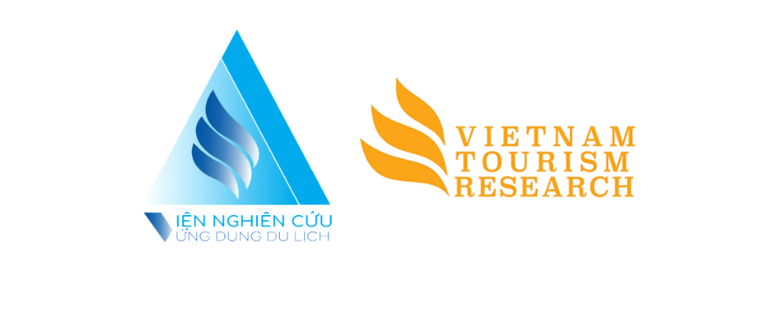This post is also available in:
Tiếng Việt (Vietnamese)
In the context of fierce global competition among countries to attract tourists, destination slogans are not merely marketing phrases but integral components of a nation branding strategy. The case of the Philippines—spanning over 50 years with dozens of slogan changes—serves as a vivid illustration of the impacts, both positive and limited, that slogans can exert on national tourism.
The presentation analyzed in this article is based on a book chapter published in 2022 by Dr. Reil G. Cruz, Associate Professor and Secretary at the Asian Institute of Tourism, University of the Philippines. With more than a decade of experience consulting for the United Nations and various local governments, Dr. Cruz offers valuable insights into the role and actual usage of tourism slogans in the Philippines and other Asian nations.
Are Slogans Really Important?
According to the technical definition, a slogan is a short phrase used in promotional campaigns to create impressions, enhance memorability, and convey the identity of a destination. Unlike logos or symbols, slogans primarily deliver messaging. However, the effectiveness of slogans remains an open question in destination marketing research.
Empirical data show that all top 10 global destinations in 2022 had distinctive slogans. This indicates that slogans, though only a minor element of the overall brand identity, can serve as a starting point for building a nation’s image in the minds of global travelers.
The Philippines and the Story of 15 Slogan Changes in 50 Years
Since 1973, the Philippines has adopted as many as 15 different tourism slogans. While other Asian countries such as Thailand, Malaysia, or India have maintained consistent slogans for decades, the Philippines has frequently changed theirs—at times using one slogan for just a single year.
Notably, the campaign “It’s More Fun in the Philippines” (2012–2018) was the most successful slogan in the country’s tourism history, thanks to its effective use of social media trends and user-generated content. However, this success was still insufficient to help the Philippines achieve significantly higher growth rates compared to neighboring countries. Overall tourist arrival growth remained lower than that of countries with more consistent branding strategies.
Lessons from Other Asian Countries
Research reveals that countries with consistent slogans have recorded remarkable growth in international arrivals:
-
Thailand: “Amazing Thailand” since 1998 helped increase tourist arrivals by over 31 million.
-
Malaysia: “Malaysia Truly Asia” since 1999 contributed to an additional 16 million visitors.
-
India: “Incredible India” since 2002 recorded growth of more than 8 million visitors.
-
Japan: “Japan Endless Discovery” since 2010 facilitated an increase of 22.5 million arrivals.
In comparison, while the Philippines achieved total growth, each campaign, due to frequent changes, brought only around half a million additional tourists on average—indicating suboptimal effectiveness.
Factors Determining the Success of a Slogan
According to Dr. Cruz, for a slogan to be effective, it must meet several stringent criteria:
-
Originate from the destination’s authentic identity: A slogan cannot be superficial or overly poetic; it must reflect what the destination genuinely offers.
-
Based on thorough consumer research: Decisions must be driven by data, not by intuition or the personal taste of leadership.
-
Involve stakeholder consultation: Local communities, tourism businesses, and media agencies must participate from the outset.
-
Create a unique selling proposition (USP): An effective slogan is a distinctive promise—such as “Truly Asia,” which is difficult to replicate.
-
High recognizability: The tourism brand must be maintained long enough to reach the level of global familiarity and recall.
-
Feasibility: A slogan is not merely a phrase—it must be a promise that can be delivered through actual experiences.
When a Slogan Cannot Save the Entire Industry
Although slogans play a role in image promotion, they cannot compensate for other essential components of national tourism competitiveness such as infrastructure, safety, service quality, digital readiness, and governance capacity.
In reality, Japan—the world’s top-ranked tourism competitiveness nation—succeeds not due to a catchy slogan, but due to strong national credibility and the efficient operation of stakeholders. Singapore, Thailand, and Malaysia also rank highly in competitiveness, whereas the Philippines often lags behind.
Moreover, slogans are powerless against external factors such as natural disasters, pandemics, or political instability. Periods of declining tourist arrivals in the Philippines often coincide with such shocks—independent of the slogan in use.
Slogans Are Necessary, But Not Sufficient
Slogans are vital tools in the destination marketing toolkit but are not decisive elements by themselves. Excessive changes cause confusion and undermine the opportunity to build long-term brand recall in travelers’ minds.
The Philippines needs to reassess its national tourism branding strategy seriously: investing in research, maintaining consistency, engaging communities, and, above all, linking the slogan with real on-the-ground experiences. Only when slogans are coupled with comprehensive improvements in competitiveness can they become effective instruments—rather than mere words on paper.











